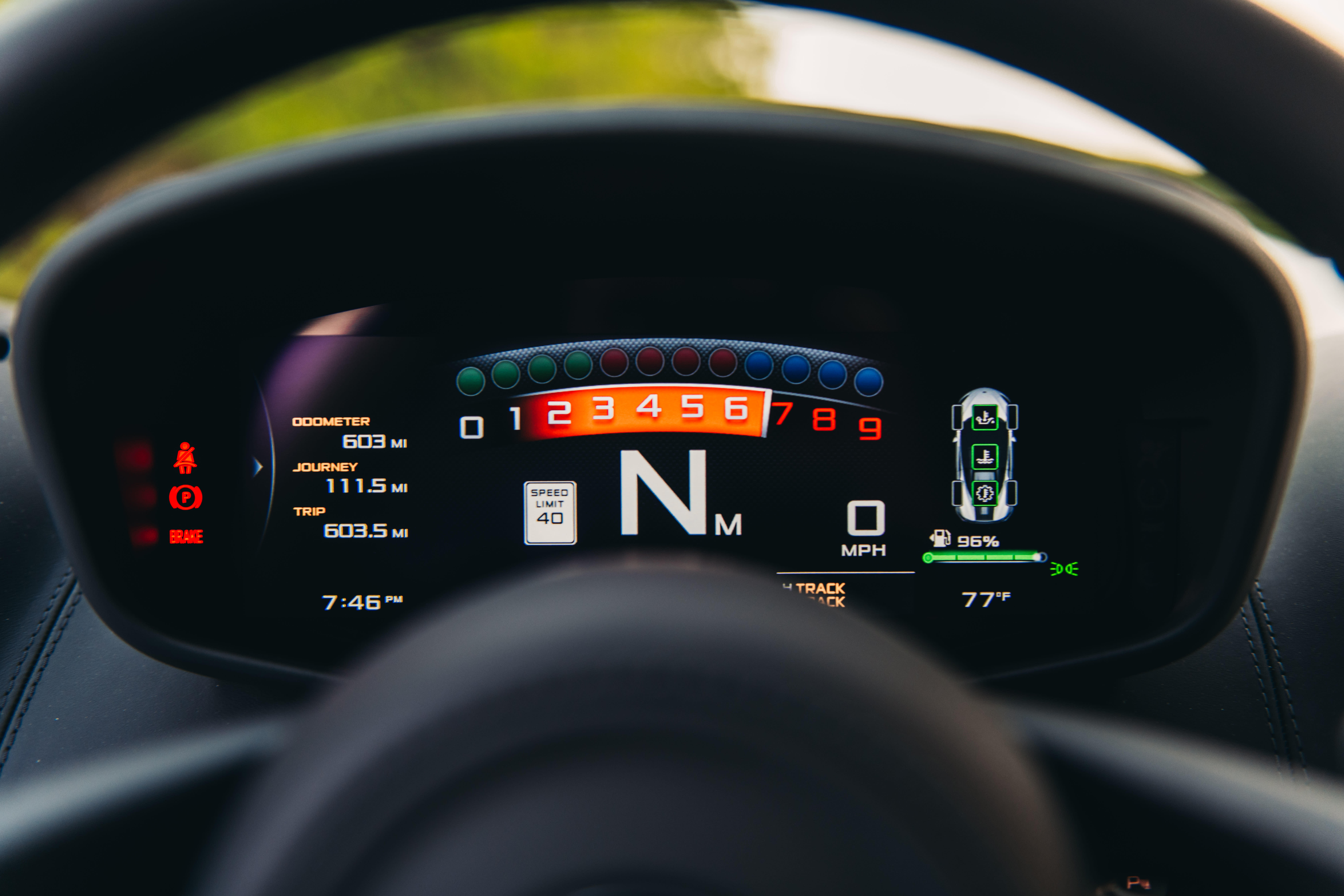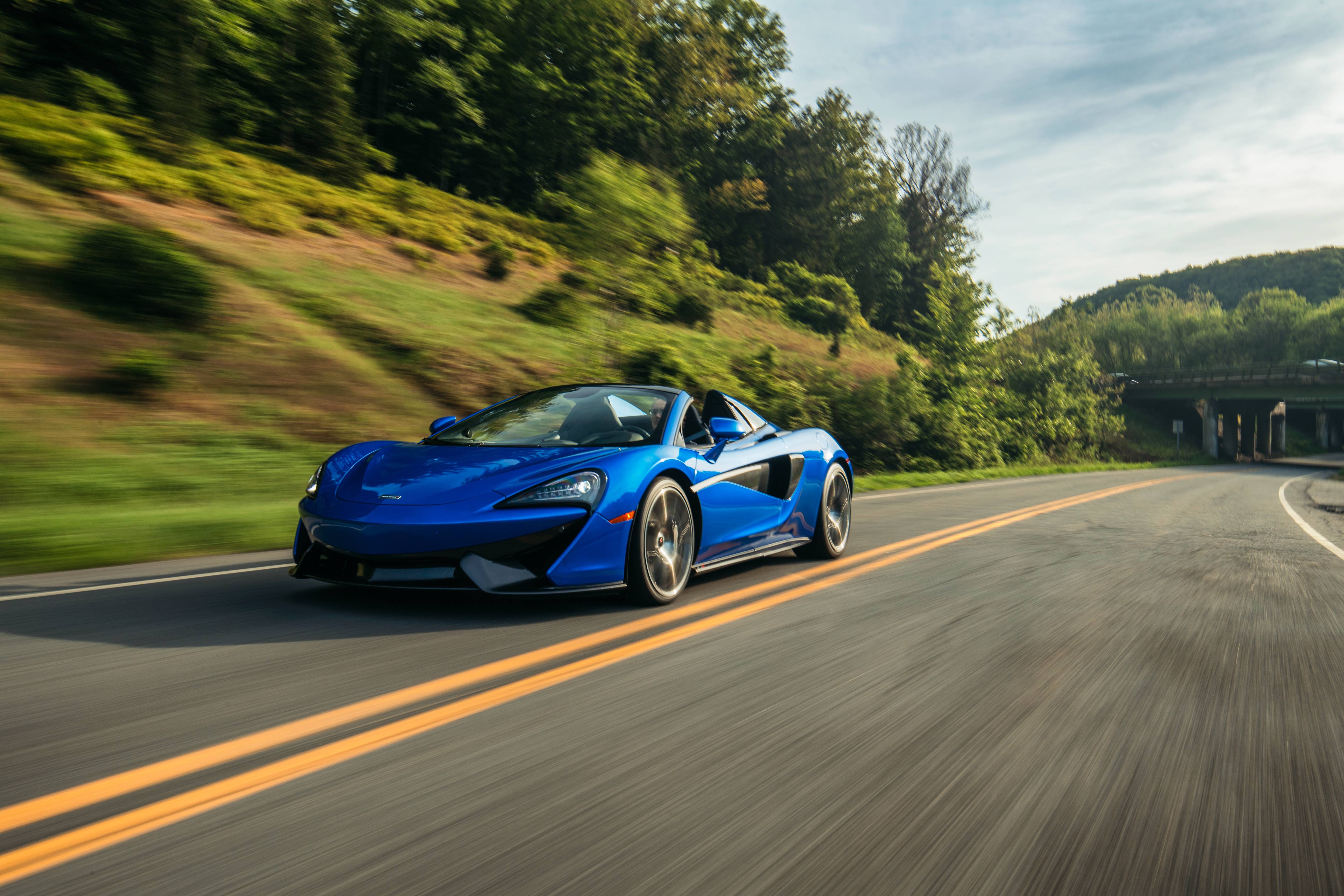
When it comes to the McLaren 570S Spider, numbers don’t matter. What matters is the perfect seating position that gives you, the driver, an unobstructed view of the road. The minimalism of the interior that lets you and your passenger focus on the journey instead of fussy switchgear or media center buttons. The swooping and exacting exterior matters so much as that it shows art and science can and will go hand-in-hand when you don’t have to compromise on either one. Oh, the ease of use matters, too. You can maneuver this car through city traffic during the middle of the day the same way you would midsize sedan. There was a time when high performance sports cars and supercars were nearly impossible to pilot anywhere besides an open road or a race track. Those days are long behind us, of course, and the 570S is one of the many points that prove so. But if you need numbers to validate McLaren’s latest sports series product, then here:
McLaren estimates the 570S Spider can hit 62 mph in 3.2 seconds and the quarter mile in 11 thanks in large part to the trusty 562 hp twin-turbocharged 3.8-liter V8 nestled behind the two comfy and supportive sport seats. At its lightest, it’s a hair below 3,000 pounds.
Those numbers are impressive, but they don’t matter because they don’t tell the entire story. The Woking-based company doesn’t consider the 570S a supercar—it’s a sports car. McLaren categorizes its lineup into three segments: Sports Series, Super Series, and Ultimate Series. The latter two feature cars designed to obliterate lap times and dominate race tracks. Make no mistake: You could carve the perfect line in any modern McLaren but the Sports Series models are more about the experience of driving more than anything else. That’s why McLaren gathered a handful of journalists on beautiful sunny day to take the new 570S Spider on a drive from the Classic Car Club Manhattan in midtown to the scenic Bear Mountain. If McLaren wanted to show off the 720S (Super Series) or brand new Senna (Ultimate Series), it’s safe bet it would have asked us to gather instead at New York’s Monticello Raceway.

Our trip started at the Classic Car Club’s headquarters on the Westside Highway. After a few remarks from the brands affable chief designer Rob Melville, we were directed to choose a car, given a brief introduction to how everything in the cabin works, and be on our way.
At launch, the McLaren 570S Spider costs a little over $200,000. Sounds like a lot, but keep in mind McLaren also makes a car that costs well north of $2 million. If ever given the chance to drive one that’s not yours, it’s best not to think about that number when driving it. Especially if you’re driving it through mid-day traffic in NYC. Luckily, the 570S is comically manageable at low speeds. There’s very little drama. The steering is light and direct, which is important when trying to get through stop-and-go traffic. The only part of the car that hints at something more sinister is the brake pedal. Firm and communicative, the 570S’s brakes impress even at city speeds. McLaren says the 570S can go from 62 mph to a dead stop in 105 ft.
If it wasn’t clear from its name, the 570S Spider is a convertible. The hardtop quickly stows away behind the seats. Usually, convertible versions of cars suffer from a lack of torsional rigidity due to the lack of a roof. But the 570S Spider, like many other high-end sports cars and supercars (and like every other McLaren road car), uses a carbon fiber tub. Fun fact: McLaren is the pioneer of the practice, building its MP4/1 F1 car around one back in 1981. Removing the top greatly changes the driving experience. The cabin feels more spacious and you can better hear the burble of the engine. About that engine: McLaren’s V8 has admirably powered the lineup and in this configuration, paired to a seven-speed dual-clutch transmission, works best when completely wrung out. Doing so on public roads may get you arrested, but it’s worth it just to feel the car pull all the way to redline.

If that doesn't put a smile on your face, try flicking the 570S into a corner. McLaren’s done a lot to ensure that the handling is close to or the same as the coupe version, like fitting the Spider with an extra rear spoiler that adds downforce at high speeds. But, precision’s not game here, rather it’s much more attuned to being playful on the limit. The 570S tends toward oversteer if you feather the throttle when rounding an apex. That likely wouldn’t be very helpful if trying to lower lap times, but when carving through a national park, it makes for a riotous time. The fact that the sun can shine down directly into the cockpit is a bonus.
In the event of idle time behind the wheel you may venture to explore the seven-inch touchscreen angled toward the driver in the middle of the cabin. It works well enough and although is not as sharp as Tesla’s offering it’s still pretty intuitive. There’s also a 12-speaker surround sound system supplied by Bowers & Wilkins that we’re told works great, but, to be honest, we didn’t find time to play to really explore it—with an open road, a fresh set of Pirelli P Zero Corsa tires, and the McLaren 570S Spider, it just really didn’t matter.

